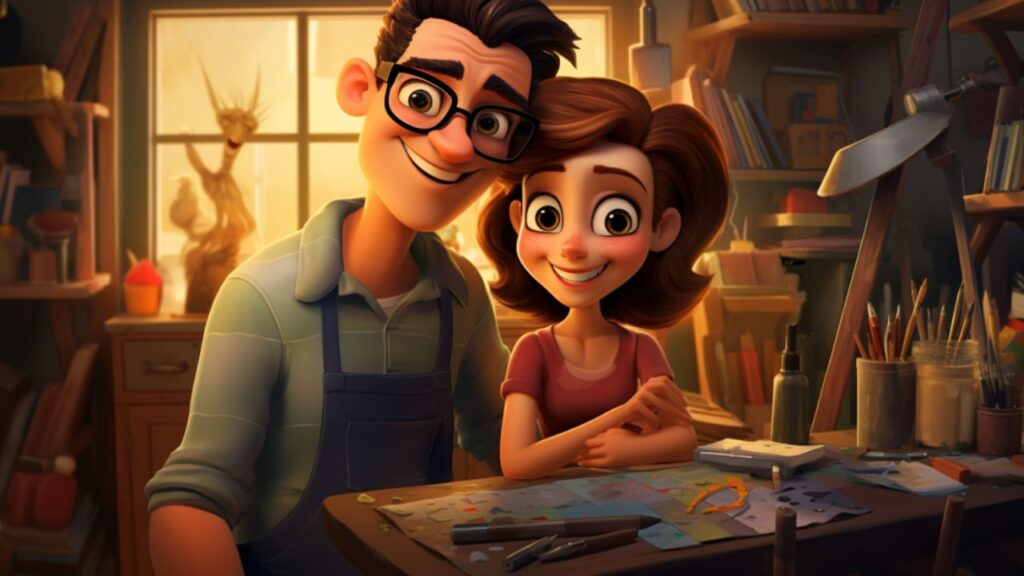In every relationship, the moments we cherish most often revolve around shared experiences. Whether it’s a hobby, a passion, or a simple interest, these mutual pursuits often form the backbone of lasting, strong connections between partners. As relationships evolve in an ever-changing world, with its myriad distractions, the importance of shared interests becomes even more pronounced.
The Foundation of Shared Interests in a Relationship
Shared interests lay the groundwork for many relationships. From the early days of getting to know each other, discovering common hobbies can be a delightful revelation. These common pursuits provide an opportunity for couples to spend quality time together, away from the stresses of daily life. Engaging in shared activities allows for the creation of cherished memories and can lead to a deeper understanding of one’s partner.
The Essence of Bonding Over Mutual Hobbies
Bonding over mutual hobbies goes beyond just spending time together; it’s about creating a shared space where both partners can be their authentic selves. These shared experiences foster communication, mutual respect, and often introduce a playful element into the relationship. Engaging in a mutual hobby means both partners have a vested interest in the activity, leading to shared victories, empathetic support during challenges, and a mutual appreciation for each other’s strengths and skills. This deepens the emotional connection and builds a foundation of trust and mutual admiration.
The Science Behind Shared Activities

As the saying goes, “Couples who play together, stay together.” But is there any scientific credence behind this sentiment? Beyond the obvious bonding and quality time spent, diving into the realm of neuroscience and psychology reveals some fascinating insights about the effects of shared activities on relationships.
The Psychological Impact on Relationships
Engaging in mutual activities fosters not just camaraderie but also enhances psychological intimacy. When couples participate together in a task or hobby, they synchronize their actions, thoughts, and even emotions. This synchronization can lead to increased feelings of unity and partnership.
Psychologists have observed that shared activities can boost relationship satisfaction. When partners learn and grow together, they can overcome challenges, which often reinforces their bond. This mutual growth and accomplishment foster feelings of pride, fulfillment, and appreciation for one another.
Moreover, shared hobbies provide a safe space for couples to communicate and understand each other’s perspectives. This kind of active engagement facilitates deeper conversations and creates a platform for vulnerability, leading to enhanced trust and intimacy.
Hormonal and Brain Responses During Joint Activities
From a biological standpoint, engaging in joint activities can trigger a cocktail of hormones and neurotransmitters that reinforce bonding. When couples participate in exhilarating or novel activities together, their brains often release dopamine, a neurotransmitter associated with pleasure and reward. This strengthens the association between the shared activity and feelings of happiness and contentment.
Furthermore, oxytocin, often referred to as the “love hormone” or “bonding hormone,” is released during moments of closeness and touch. When couples engage in shared activities, especially those that involve physical closeness or touch like dancing or tandem sports, oxytocin levels can spike, further deepening their emotional bond.
Another hormone, endorphin, which is responsible for reducing pain and boosting pleasure, can also be released during mutual activities, particularly those that involve physical exertion. This leads to feelings of euphoria, further associating the shared hobby with positive emotions.
In essence, when couples indulge in shared activities, their brains create and strengthen neural pathways that link these experiences with positive emotions, continually reinforcing the bond between them.
Benefits of Pursuing Shared Hobbies

Engaging in mutual interests or hobbies can be a source of joy for many couples. It goes beyond mere leisure; it’s an avenue for deepening the bond, learning, and growth. Here’s a deeper look into the myriad benefits couples can derive from pursuing shared hobbies.
Strengthening Emotional Connection
Shared hobbies can be a veritable cauldron of emotions. Whether it’s the exhilaration of scaling a mountain together or the shared frustration of a missed note in a duet, these experiences allow couples to resonate emotionally. Such shared emotional highs and lows foster empathy and emotional synchronization, helping couples feel more connected. Over time, these joint activities become more than just hobbies; they morph into shared rituals that fortify the emotional foundation of the relationship.
Improving Communication Skills
Every hobby or activity comes with its unique challenges and learnings. As couples navigate these together, they inadvertently hone their communication skills. They learn to give feedback without offending, to listen actively, and to articulate their thoughts clearly. Whether it’s deciding on the next move in a board game or strategizing in a sport, effective communication becomes paramount. Over time, these communication skills spill over into other aspects of the relationship, making conversations more fluid and misunderstandings less frequent.
Discovering New Facets of Your Partner
Every shared activity is an opportunity to see your partner in a new light. Perhaps a competitive streak emerges during a game night, or a hidden talent is unveiled during an art class. These discoveries can be delightful and surprising, adding layers to one’s understanding of their partner. It’s these nuances that keep the relationship fresh and the fascination alive. You might have known your partner for years, but shared hobbies can continuously unravel new dimensions, ensuring the relationship never stagnates.
Reducing Conflict and Strengthening Understanding
Engaging in shared activities often places couples in situations where compromise and understanding are essential. For instance, if a couple takes a dance class, one might excel while the other struggles. Here, patience and encouragement come into play, reducing the space for conflict. Additionally, engaging in mutual hobbies means spending quality time together, away from the stresses of daily life. This can drastically reduce external sources of tension, fostering a more harmonious relationship environment.
Building a Shared Memory Bank
Every moment spent together in pursuit of a shared hobby becomes a cherished memory. Over the years, these memories compile into a rich tapestry of shared experiences, jokes, successes, and even failures. This shared memory bank becomes a reservoir of happiness, one that couples can dip into during trying times. It’s a constant reminder of their bond, their shared history, and the many reasons they chose each other.
In essence, while individual hobbies hold their unique value, shared activities become the threads that weave couples closer, creating a tapestry of experiences, memories, and emotions that are invaluable in nurturing a lasting relationship.
Ideas for Shared Hobbies for Couples

Every couple is unique, with their own set of preferences, quirks, and interests. However, the beauty lies in discovering shared passions that can be pursued together. Here are some ideas for hobbies that can invigorate the connection between partners and provide countless hours of shared joy:
Traveling Together: Exploring the World Hand in Hand
Travel can be transformative. For couples, the allure of discovering new cultures, cuisines, and landscapes together can be an intoxicating experience. Whether it’s a serene getaway to a secluded beach, an adventurous trek through rugged mountains, or a cultural immersion in an ancient city, traveling offers endless opportunities for bonding. It’s not just about the destinations; the journey itself—with its challenges, surprises, and shared experiences—becomes a testament to the couple’s compatibility and resilience.
Culinary Adventures: Cooking or Baking Together
The kitchen can be a playground for couples. Cooking or baking together becomes an act of creation—mixing flavors, experimenting with ingredients, and reveling in the shared satisfaction of a dish well-made. This activity not only tantalizes the taste buds but also teaches patience, collaboration, and the joy of savoring the fruits of joint labor. From preparing a lavish dinner to baking a simple pie, the culinary journey can be as enriching as the meal itself.
Fitness Routines: Yoga, Dancing, or Jogging Side by Side
Staying fit doesn’t have to be a solitary endeavor. Whether it’s the synchronized movements in a couples’ yoga session, the euphoria of dancing to a favorite tune, or the rhythmic pace of a morning jog, fitness activities can be a bonding experience. They foster mutual encouragement, shared goals, and a sense of accomplishment that’s doubly satisfying when achieved together.
Artistic Pursuits: Painting, Music, or Photography
Art has a unique way of baring the soul. For couples, delving into artistic pursuits can be a journey of mutual discovery. Whether it’s creating a canvas masterpiece, strumming a guitar in harmony, or capturing the world through a lens, these activities allow couples to express themselves and appreciate each other’s perspectives. The act of creation becomes a metaphor for the relationship itself—filled with colors, notes, and memories that are all the more beautiful when shared.
Gardening: Nurturing Life Together
There’s something profoundly satisfying about planting a seed and watching it grow. For couples, gardening can be a metaphorical and literal nurturing of life. Tending to plants, understanding their needs, and reveling in the bloom of flowers or the yield of fruits and vegetables can be a rewarding experience. It teaches patience, care, and the joys of shared responsibility.
Book Clubs or Movie Nights: Sharing Stories and Perspectives
Stories have the power to transport, inspire, and provoke thought. Couples can dive into the world of literature or cinema together, exploring narratives that resonate with both. Discussing a gripping plot twist, debating a character’s motivations, or simply snuggling during a movie marathon can become cherished moments. These shared experiences offer insights into each other’s tastes, preferences, and worldview, fostering deeper understanding and connection.
In essence, shared hobbies offer a canvas for couples to paint their story. It’s a journey of mutual discovery, where every shared interest becomes a chapter in their collective narrative—a narrative that’s as unique and beautiful as the bond they share.
Overcoming Challenges in Finding Common Hobbies

Shared hobbies can offer a rich tapestry of bonding experiences for couples, but the road to finding those shared passions isn’t always straightforward. Each individual brings to a relationship their unique set of interests, experiences, and passions. These differences, while they add depth to a relationship, can sometimes pose challenges when trying to identify common hobbies. Let’s delve into how couples can navigate these challenges:
Respecting Individual Passions
Every individual has passions that define and fulfill them. These could have been nurtured since childhood or developed over time, and they hold a special place in their heart. When in a relationship, it’s essential to respect and acknowledge these individual passions, even if they don’t resonate with the other partner.
For instance, one partner might have a keen interest in bird watching, while the other might find joy in sculpting. Instead of dismissing each other’s hobbies as mundane or uninteresting, couples should approach them with curiosity. By showing interest in the partner’s hobby, even without active participation, couples can build mutual respect and understanding.
Compromising and Trying New Activities
While it’s vital to respect individual passions, it’s equally important for couples to be open to compromise. This doesn’t mean giving up personal interests but rather being willing to try something new that might appeal to both.
For instance, if one partner loves outdoor hikes and the other enjoys photography, they can combine these interests into photographic nature walks. The idea is to find middle ground where both partners can derive joy. This often requires open communication, a willingness to step out of one’s comfort zone, and a dash of adventurous spirit.
Balancing Personal and Shared Time
One of the key challenges couples face is striking the right balance between personal time and shared activities. While pursuing shared hobbies is beneficial, it’s equally important to set aside time for individual pursuits. This ensures that both partners get the space to recharge, reflect, and engage with their personal passions.
Creating a structured routine can help. Couples can designate certain days or hours for shared activities while ensuring they have ample time for individual pursuits. This balance ensures that while the couple grows together through shared experiences, they also maintain their individuality and personal growth.
In conclusion, while the journey of finding shared hobbies can pose challenges, it’s these very challenges that, when navigated with love, understanding, and compromise, strengthen the relationship. It becomes less about the activities themselves and more about the journey of mutual discovery, respect, and growth.
How to Keep the Spark Alive in Shared Activities

Engaging in shared hobbies can be a delightful experience, weaving threads of togetherness and fostering a deep sense of connection. However, like all aspects of a relationship, it requires effort to keep the enthusiasm alive. The excitement that once buzzed around a new activity can wane, and couples might find themselves stuck in a routine. Yet, with a bit of intentionality, that spark can not only be maintained but can glow even brighter over time. Let’s explore how couples can keep the flame alive in their shared hobbies:
Setting Mutual Goals
When couples set mutual goals around their shared activities, it creates a sense of purpose and direction. These goals act as a compass, guiding the journey and providing a clear vision of what they wish to achieve together. Whether it’s mastering a dance form, hiking a certain number of trails within a year, or reading a set number of books together, these shared objectives become milestones to work towards.
Setting goals also introduces an element of challenge, which can be invigorating. It’s about pushing boundaries together, overcoming obstacles, and relishing the sense of accomplishment that comes after. Moreover, the process of setting goals – discussing aspirations, negotiating, and finalizing – can itself be a bonding exercise, reflecting mutual respect and understanding.
Celebrating Achievements Together
Every milestone reached, big or small, deserves recognition. Celebrating these achievements breathes fresh life into shared activities, reinforcing the joy of togetherness. Whether it’s successfully cooking a challenging recipe, finishing a marathon, or creating a piece of art, pausing to acknowledge and celebrate these moments is vital.
These celebrations can be as simple as a quiet evening reminiscing about the journey or as grand as a weekend getaway. It’s less about the scale and more about the sentiment. When couples take the time to appreciate their collective efforts, it fosters gratitude, pride, and an eagerness to embark on new adventures together.
Continuously Exploring and Experimenting
The beauty of shared hobbies lies in the endless opportunities they offer for exploration and experimentation. To keep the spark alive, couples should remain curious and open to trying new facets of their shared activity or even introducing new hobbies into the mix. This could mean exploring different genres within a shared hobby, like trying various dance forms or cuisines, or taking up a new activity altogether.
Continuously pushing the envelope ensures that the shared hobby remains dynamic. It prevents the activity from becoming monotonous and introduces an element of surprise and novelty. This way, the shared hobby remains a continuously evolving journey of discovery, where every day promises a new story, a new challenge, and a new memory.
In essence, keeping the spark alive in shared activities is akin to tending to a garden. It requires nurturing, attention, and continuous effort. But the blooms that emerge – of connection, understanding, and shared joy – make every moment worth it.
Conclusion

Life is often described as a journey, filled with discoveries, challenges, and moments of joy. Relationships, being a significant aspect of this journey, can become a beautiful voyage of their own when enriched with shared experiences and mutual passions. Let’s explore the final thoughts on the transformative power of shared hobbies and the magic they can weave in a relationship:
The Journey of Discovery Through Shared Hobbies
Every shared activity embarked upon is a new chapter in a couple’s shared story. Whether it’s experimenting with a culinary recipe, trying their hand at painting, or exploring an unknown destination, every experience opens the door to new discoveries.
These aren’t just discoveries about the hobby or activity itself, but also about each other. Each shared hobby reveals preferences, strengths, vulnerabilities, and many subtle facets of their personalities. As couples spend time on these activities, they uncover layers of their partner’s character, leading to deeper respect, understanding, and love.
Moreover, this journey of discovery, while mainly centered around joy, can also pose challenges. And it’s through these challenges that couples truly understand their dynamics, adaptability, and resilience. Every hurdle overcome becomes a testament to their synergy and the strength of their bond.
Nurturing Your Relationship Through Mutual Interests and Growth
A shared hobby is more than just a pastime; it’s a medium for mutual growth. As couples invest time, effort, and emotions into an activity, they’re inadvertently investing in their relationship. The patience displayed during a challenging trek, the support during an intricate art project, or the shared elation after finishing a book – these moments are microcosms of the larger relationship, highlighting understanding, support, and shared joy.
Furthermore, as they grow within a hobby – mastering skills, facing setbacks, and celebrating successes – they mirror the growth within their relationship. The highs and lows within these shared activities resonate with the ups and downs they face in their journey together, teaching them valuable lessons of patience, perseverance, and the importance of celebrating small victories.
But beyond all the growth and understanding lies the fundamental essence of joy. The pure, unadulterated happiness derived from doing something you love with someone you love is unparalleled. This joy, coupled with mutual growth and deeper understanding, ensures that the relationship remains vibrant, fulfilling, and truly special.
In wrapping up, shared hobbies are the silent, yet powerful threads that weave a tapestry of memories, experiences, and emotions in a relationship. They are not just activities; they are experiences that mold the relationship, ensuring it remains dynamic, enriched, and ever-evolving. As couples continue their journey through life, these shared passions become their cherished pit stops, their moments of respite, and their fondest memories. And it’s in these moments, amidst paints, books, treks, or dance steps, that love finds its most profound expressions.
You may like
Belinda Balance is a dedicated yoga enthusiast who has integrated the wisdom of ancient practices into modern relationships. Her life revolves around maintaining harmony in all aspects, especially in love and companionship. She believes that just like our bodies, relationships require balance, flexibility, and a lot of practice to stay healthy.
Belinda has dedicated her life to teaching others about the importance of mindfulness in relationships, often drawing parallels between the discipline required in yoga and the commitment necessary in relationships.
- Belinda Balancehttps://loveinteract.com/author/belinda-balance/
- Belinda Balancehttps://loveinteract.com/author/belinda-balance/
- Belinda Balancehttps://loveinteract.com/author/belinda-balance/
- Belinda Balancehttps://loveinteract.com/author/belinda-balance/










